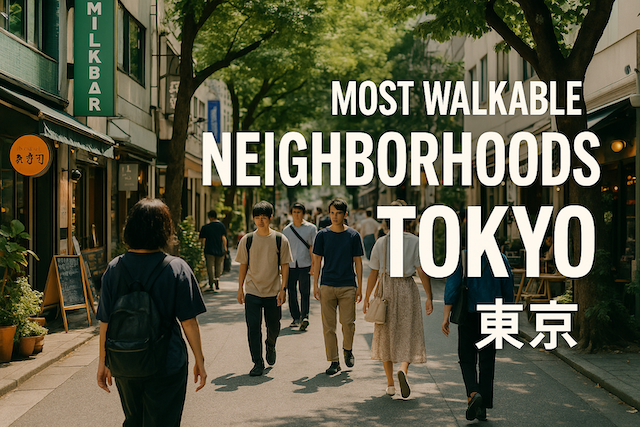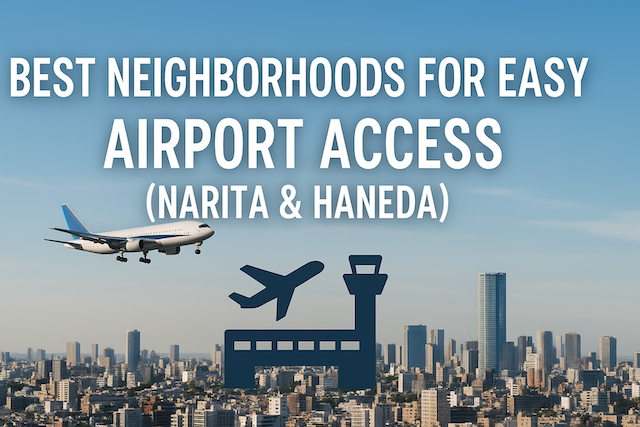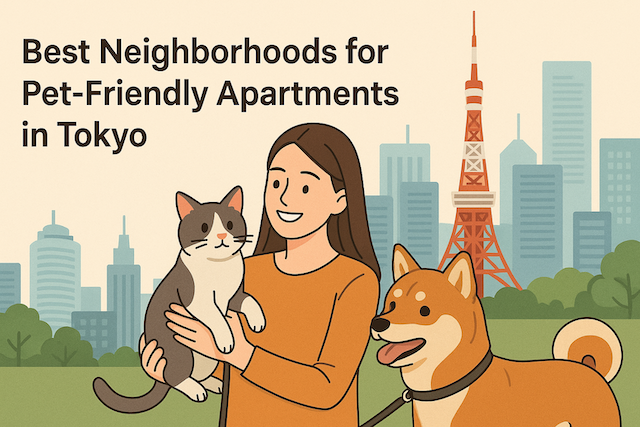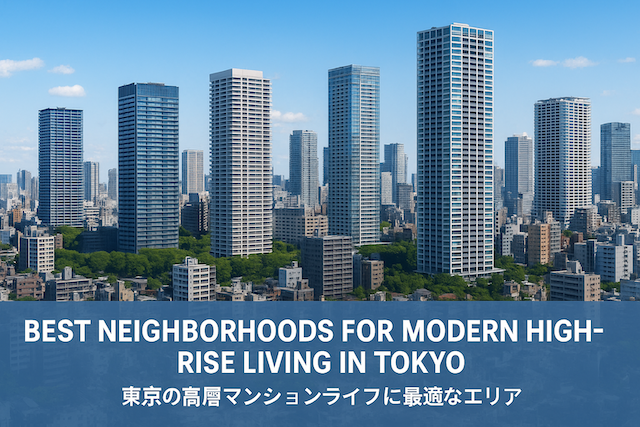Where to Live in Tokyo for Professionals
Tokyo is one of the most dynamic cities in the world — a place where career opportunities, world-class convenience, and urban culture meet. For professionals working in Japan’s capital, choosing where to live isn’t just about finding a comfortable apartment — it’s about balancing commute time, lifestyle, and career goals. Whether you work in finance, tech, media, or consulting, Tokyo offers diverse neighborhoods suited to every kind of working professional.
In this guide, we’ll explore the best areas to live in Tokyo for professionals, covering location advantages, transport convenience, work-life balance, and lifestyle factors like restaurants, gyms, and after-work spots.
Why Tokyo Is Ideal for Professionals
Tokyo consistently ranks as one of the world’s best cities for professionals. The city’s infrastructure, safety, and efficiency make it particularly attractive for working residents. The public transportation system ensures that even if you don’t live right next to your office, you can still enjoy a smooth, punctual commute.
Moreover, Tokyo’s districts cater to various professional lifestyles — from high-powered corporate employees to creative freelancers. There are business hubs like Marunouchi and Shinjuku, tech-friendly neighborhoods like Shibuya, and quieter, more residential areas like Nakameguro or Meguro that are perfect for remote workers or entrepreneurs seeking balance.
Key Factors When Choosing a Place to Live
Before diving into specific areas, consider these essential factors that matter most to professionals in Tokyo:
-
Commute Time – Tokyo’s train network is vast, but long commutes can be exhausting. Aim for a location within 30–45 minutes of your workplace.
-
Lifestyle Amenities – Look for access to gyms, coworking spaces, cafes, restaurants, and green parks.
-
Budget – Rents vary significantly by area. Central business districts are expensive, while slightly outer areas offer better value.
-
Connectivity – Easy access to major train lines like Yamanote, Marunouchi, and Ginza lines can make your life much easier.
-
Work-Life Balance – Proximity to social areas and quiet retreats can help you recharge after long hours at the office.
1. Minato Ward – For Executives and Global Professionals
Minato-ku is Tokyo’s premier business and residential district, home to many embassies, multinational corporations, and luxury apartment towers. Areas like Roppongi, Akasaka, and Azabu-Juban attract high-income professionals who prioritize convenience, prestige, and international community.
Highlights
-
Home to major corporate headquarters (Google Japan, Goldman Sachs, Apple Japan)
-
Excellent bilingual services and international schools
-
Vibrant nightlife in Roppongi and fine dining in Azabu
-
Easy access to Shibuya, Shinjuku, and Tokyo Station
Ideal For
Executives, diplomats, and expats working in multinational companies who value global lifestyle and networking opportunities.
2. Shibuya Ward – For Startups, Creatives, and Tech Professionals
Shibuya has transformed into Japan’s Silicon Valley hub, attracting tech startups and venture capital firms. It’s also one of the most energetic and youthful districts, offering plenty of cafes, coworking spaces, and entertainment options.
Highlights
-
Shibuya Stream and Hikarie area feature modern offices and residential buildings
-
Short commute to major tech companies and creative agencies
-
Popular neighborhoods: Daikanyama, Ebisu, and Nakameguro
-
Endless dining, bars, and after-work venues
Ideal For
Young professionals, tech workers, designers, and freelancers who love working and socializing in a fast-paced environment.
3. Chiyoda Ward – For Corporate and Finance Professionals
Located at the center of Tokyo, Chiyoda is home to Marunouchi, Otemachi, and Kanda, some of Japan’s most important business districts. Many of Japan’s top financial institutions and government offices are based here.
Highlights
-
Walking distance to Tokyo Station and Imperial Palace
-
Surrounded by world-class offices and high-end apartments
-
Excellent train access to all parts of Tokyo
-
Quiet residential options in nearby Kanda and Jimbocho
Ideal For
Bankers, consultants, and senior professionals working around Tokyo Station who prefer to live near their offices.
4. Meguro and Nakameguro – For Balance and Comfort
For professionals who want to escape Tokyo’s intensity after work, Meguro and Nakameguro offer a perfect blend of city life and relaxation. The area has a stylish, laid-back vibe with tree-lined streets, boutique cafes, and riverside views.
Highlights
-
Popular with designers, remote workers, and entrepreneurs
-
Nakameguro River area is famous for cherry blossoms and trendy cafes
-
Direct access to Shibuya via Tokyu Toyoko Line
-
Peaceful yet lively neighborhood
Ideal For
Professionals who work in creative fields or remote settings and value a calm, community-oriented environment.
5. Kōtō Ward (Toyosu & Ariake) – For Modern Urban Living
Kōtō-ku’s Toyosu and Ariake districts are modern residential zones built for professionals who enjoy contemporary living with a seaside touch. These neighborhoods offer newer apartments, wide streets, and proximity to Tokyo Bay.
Highlights
-
Home to TeamLab Planets, Lalaport Toyosu, and many corporate offices
-
Great for families and professionals alike
-
Spacious apartments with modern facilities
-
Easy access to Ginza and Tokyo Station via Yurakucho Line
Ideal For
Mid-level professionals and corporate employees seeking a clean, modern, and peaceful environment near the city center.
6. Setagaya Ward – For Remote Workers and Families
Setagaya is Tokyo’s largest residential area, offering greenery, spacious apartments, and a slower pace of life. While it’s not a typical business district, it’s ideal for remote professionals or families who work flexibly.
Highlights
-
Relaxed atmosphere with parks like Komazawa and Kinuta
-
Great local cafes and coworking spaces
-
Direct trains to Shibuya via Den-en-Toshi Line
-
Slightly more affordable than central wards
Ideal For
Professionals working remotely or part-time in the city who value peace, space, and nature.
7. Shinagawa – For Frequent Business Travelers
Shinagawa is one of Tokyo’s key transport hubs, making it an excellent location for professionals who often travel for business. It provides fast access to Haneda Airport, the Shinkansen bullet train, and central Tokyo.
Highlights
-
Excellent access to Yokohama and Kansai via Shinkansen
-
Corporate offices in Konan and Takanawa areas
-
New developments around Shinagawa Station with luxury apartments
-
Near the waterfront and business hotels
Ideal For
Consultants, sales representatives, and international business professionals who need to move around Japan frequently.
8. Bunkyo and Taito – For Affordable Central Living
For professionals who want to live near central Tokyo without paying Minato-level rent, Bunkyo and Taito wards are hidden gems. They offer good access to major train lines, traditional charm, and quiet residential streets.
Highlights
-
Convenient commute to Otemachi, Ueno, and Akihabara
-
More affordable rental options for single professionals
-
Safe, local community atmosphere
-
Close to universities and coworking hubs
Ideal For
Young professionals or researchers who want a cost-effective yet central location with good access to major workplaces.
Tips for Professionals Moving to Tokyo
-
Prioritize train access: Proximity to stations like Shibuya, Tokyo, or Shinagawa saves significant time.
-
Use rental agents with English support if you’re new to Japan.
-
Check for coworking spaces nearby if you work remotely.
-
Consider monthly apartment rentals if you’re on a short-term assignment.
-
Explore neighborhood amenities like supermarkets, gyms, and clinics before signing a lease.
Cost of Living Overview
| Area | Average Monthly Rent (1BR) | Commute to Center | Vibe |
|---|---|---|---|
| Minato (Roppongi, Azabu) | ¥250,000–¥400,000 | 10–15 min | Luxury, international |
| Shibuya (Daikanyama, Ebisu) | ¥200,000–¥300,000 | 10–20 min | Trendy, creative |
| Chiyoda / Marunouchi | ¥220,000–¥350,000 | 0–10 min | Corporate, central |
| Meguro / Nakameguro | ¥180,000–¥250,000 | 15 min | Relaxed, stylish |
| Toyosu / Ariake | ¥170,000–¥230,000 | 20–25 min | Modern, family-friendly |
| Setagaya | ¥150,000–¥200,000 | 25–30 min | Green, suburban |
| Bunkyo / Taito | ¥140,000–¥190,000 | 15–20 min | Quiet, affordable |
Final Thoughts
Tokyo offers a diverse range of neighborhoods to suit every type of professional. Whether you prefer the prestige of Minato, the innovation of Shibuya, or the calm charm of Meguro, your ideal balance of work and lifestyle can be found here.
Ultimately, the best place to live in Tokyo for professionals depends on your career stage, work location, and desired lifestyle. With careful consideration, you can enjoy Tokyo’s efficiency, energy, and elegance — all while thriving in your professional journey.
FAQs
What are the best Tokyo neighborhoods for busy professionals?
Minato (Roppongi, Akasaka, Azabu-Juban) for prestige and proximity to global firms; Shibuya (Daikanyama, Ebisu, Nakameguro) for tech and creative scenes; Chiyoda (Marunouchi, Otemachi) for finance and consulting; Shinagawa for travelers; Kōtō (Toyosu, Ariake) for modern waterfront living; Setagaya for quieter, remote-friendly lifestyles; and Bunkyō/Taitō for central value.
How long should my commute be in Tokyo?
Aim for 30–45 minutes door-to-door on most days. Under 25 minutes is excellent but pricier; 45–60 minutes may be acceptable if you gain space, greenery, or lower rent. Prioritize one-seat rides or transfers at major hubs (Shibuya, Tokyo, Shinagawa) to reduce stress and variability.
Which train lines are the most useful for professionals?
The JR Yamanote Loop is universally helpful. Marunouchi, Ginza, Hanzōmon, Hibiya, and Chiyoda subway lines efficiently connect business districts. The Tōyoko/Den-en-Toshi lines link popular residential areas to Shibuya. Proximity to Shinagawa (JR/Tōkaidō Shinkansen) benefits frequent domestic travelers and those flying via Haneda.
Where should I live if I work near Tokyo Station or Otemachi?
Consider Chiyoda (Kanda, Jimbochō) for walkable or short-hop commutes, Minato’s Toranomon/Akasaka for a quick subway ride, or Bunkyō for quieter residential streets with easy access to Marunouchi Line. If you prefer modern towers and amenities, look at Kōtō’s Toyosu with a straightforward link via Yurakuchō Line.
What areas suit startup and tech professionals?
Shibuya proper, Daikanyama, Ebisu, and Nakameguro place you close to tech offices, coworking, and investor meetups. You’ll find late-night dining, cafés for working sessions, and frequent community events. If you want slightly calmer nights while staying connected, Meguro and Sangenjaya are strong alternatives.
What neighborhoods balance calm living with city access?
Meguro and Nakameguro offer tree-lined streets, cafés, river walks, and quick hops to Shibuya. Setagaya (Sangenjaya, Komazawa-Daigaku) provides space and parks with reasonable Den-en-Toshi access. Bunkyō delivers central quiet near universities and libraries, appealing to researchers and professionals who value low-key evenings.
How much rent should I expect as a single professional?
Approximate 1BR ranges: Minato ¥250,000–¥400,000; Shibuya ¥200,000–¥300,000; Chiyoda ¥220,000–¥350,000; Meguro/Nakameguro ¥180,000–¥250,000; Toyosu/Ariake ¥170,000–¥230,000; Setagaya ¥150,000–¥200,000; Bunkyō/Taitō ¥140,000–¥190,000. Actual prices vary by building age, proximity to the station, and unit size/layout.
Is it better to live near a big hub or a quieter local station?
Near a hub (Shibuya, Tokyo, Shinagawa) minimizes transfer risk and saves minutes daily but costs more. A quieter station one or two stops away can cut rent and noise while keeping commute times reasonable. Evaluate peak-hour crowding and station amenities before signing.
What should international professionals prioritize when renting?
Look for English-friendly agents, clear move-in cost breakdowns (deposit, key money, guarantor fees), and buildings with reliable internet and package delivery lockers. Proximity to supermarkets, clinics, and gyms matters. If you host overseas visitors, quick access to Shinagawa or Haneda can be a tiebreaker.
Are coworking spaces easy to find?
Yes. Shibuya, Ebisu, Roppongi, and Marunouchi have dense coworking ecosystems, while Meguro, Nakameguro, and Setagaya offer smaller, community-centric options. Confirm 24/7 access, phone booths, meeting rooms, and day-pass policies if you split time between home and office.
How can I maintain work–life balance in central Tokyo?
Favor neighborhoods with green space (Meguro River, Komazawa Park, Hibiya Park), short walks to gyms or studios, and a supermarket en route from the station. Keep your transfer count low, schedule errands near transit, and choose buildings with quiet hours and soundproofing.
What’s the advantage of living in Shinagawa?
Rapid access to the Tōkaidō Shinkansen, JR lines, and Haneda Airport streamlines domestic trips and early flights. Newer high-rises around the east exit offer modern amenities. It’s ideal for consultants, sales teams, and managers covering Tokyo, Yokohama, and Kansai regularly.
Is waterfront living in Toyosu/Ariake practical for professionals?
Yes, if you value modern towers, wider sidewalks, and family-friendly amenities. Commutes to Ginza/Marunouchi via the Yurakuchō Line are straightforward, and you’ll find large malls, gyms, and bayfront paths. Ensure train frequency and late-night options align with your work schedule.
How do I reduce crowding stress on my commute?
Target lines with frequent service, live one stop before a major hub to board earlier, and consider reverse-commute patterns when possible. If your firm allows flexible hours, shifting by 30–45 minutes can dramatically change train density and comfort.
What should I check during a viewing?
Measure true door-to-platform time, test mobile/data signal, inspect storage, water pressure, and sound insulation, and note supermarket and pharmacy distances. Visit at rush hour and late evening to gauge street noise and foot traffic. Confirm bike parking and parcel locker availability.
Are month-to-month or serviced apartments available?
They exist, especially around central business districts and expat-heavy areas. They cost more but reduce hassle with furniture and utilities bundled. They are useful for short assignments, first months in Tokyo, or while you scout a long-term lease.
Is living near nightlife a bad idea for professionals?
It depends. Proximity to restaurants and bars is convenient for networking and late dinners, but noise can impact sleep. If you choose lively zones (Roppongi, central Shibuya), prioritize higher floors, double-glazed windows, and slightly off-main-street locations.
What’s a sensible decision framework to pick an area?
Define your top two priorities (time, budget, space, or calm). Map your office and shortlist three lines that reach it with ≤1 transfer. Test sample commutes, price three comparable units across different wards, and pick the place that preserves energy on your busiest week.







